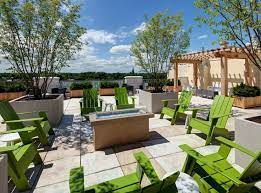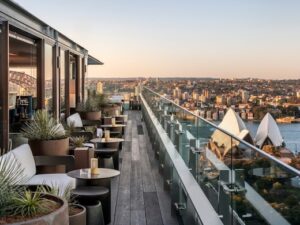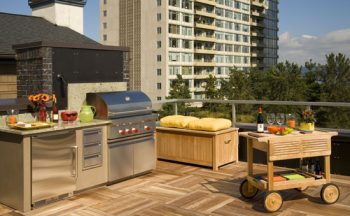 May 2023
May 2023
There is now a general consensus that human activity has impacted our world, and that many of the changes are irreversible.
Buildings are responsible for nearly 40 percent of all carbon emissions which impact on hotter and colder temperatures that require more energy to keep our homes comfortable. Countering the effects of climate change will require that buildings undertake more frequent and detailed inspections, repairs and replacements to keep up with deterioration and ensure residents remain safe.
Roof upgrades are likely to become more common. They are increasingly important because each building is part of a “heat island” – large amounts of concrete and buildings that absorb and trap heat before releasing it back into the environment. One relatively inexpensive and simple upgrade is to apply a coating of reflective white paint. Adding a community terrace or garden is more expensive and complex. Each upgrade has “green” benefits that include energy savings. There may be various grants and incentives available. Many help enhance lifestyle, community living and property values. Each project needs to be evaluated against its cost.
Any roofing project is dependent on the type of roof. Low-rise units are more likely to have a sloped roof. Upgrading to a “cool roof” which has a reflective surface can reduce the roof temperature by up to 25 degrees Celsius (45 degrees Fahrenheit) from a typical asphalt roof. This results in less heat transferred indoor to your home which reduces the demands on air conditioning systems. It also reflects a majority of damaging ultraviolet rays. There is a monthly savings in energy bills after installation of a “cool roof” and a longer lifespan.
A flat root, more common in larger buildings, offers added benefits. Converting to a “green roof” – a vegetation-covered roof – can prolong a roof’s lifespan by 20 years. Vegetation prevents exposure to the damaging effects of ultraviolet radiation, precipitation and cold winds, plus storm water control and insulation. Combined with decking, a “green roof” becomes a community social space which can include seating and barbecues.
Roofs can incorporate solar panels that absorb the sun’s rays and convert them into electricity, which can be used by the building and stored in batteries for later use thus reducing the cost to purchase electricity.
Upgrading to green or cool roofs help mitigate the effects and higher costs of climate change.

Find Vendors in these Related Categories
- Building Sciences
- Contractors - Electrical
- Contractors - General
- Contractors - Mechanical
- Door & Lock Services
- Energy Services
- Energy Services - Efficiency
- Energy Services - Electricity
- Energy Services - Gas
- Energy Services - Water
- Engineering Services
- Environmental Consulting
- HVAC
- Landscaping and Gardening Services
- Lighting Services & Suppliers
- Paving, Concrete and Epoxy Coatings
- Pressure Washing
- Roofing
- Roofing - Green
- Snow Removal Services
- Water Proofing & Systems







